
Globally, conventional textile Industry is one of the most polluting industries on the planet. According to World Bank estimates, textile industry is responsible for as much as 20% of industrial pollution; both in water and on land. Also, it has been estimated that cotton uses 2.5% of world’s cultivated land and 16% pesticides. To control the environmental pollution caused by textile manufactures, toxin deficient methods need to be adopted.
-
Raw Materials
-
Water
-
Waste Water
-
Solid Waste
-
Energy
-
Renewable Energy
-
Greenhouse Gases
-
Green Chemistry
Sustainable Raw Materials
Consumers are increasingly considering the sustainability aspects of their textile purchases, as they are becoming better aware of negative environmental impacts with in the supply chain. As a responsible Hosiery manufacturing company, Interloop Limited has been implementing multiple international standards that address environmental and social impacts. It has incorporated the philosophy of sustainable operations as an integral part of its business strategy. Sustainability aspect is always the top consideration in raw material provision, added chemistry and hosiery production practices. In addition, Interloop is committed to reduce the use of energy, lowering CO2 emissions and increasing biodiversity.
Renewable materials are those which can either be manufactured or generated quick enough to keep pace with their fast usage. Renewable materials can be made from natural products or produced synthetically, and often include recycled products.
Cotton is considered as renewable textile material but conventional cotton production imparts significant environmental impacts viz. higher water and land use intensity, insecticides & pesticides and nonefficient agricultural practices. We have planned for incremental use of Organic Cotton, BCI Cotton & Recycled Yarn, leading to increase in our sustainable & renewable raw material inventory.


Renewable materials are those which can either be manufactured or generated quick enough to keep pace with their fast usage. Renewable materials can be made from natural products or produced synthetically, and often include recycled products.
Cotton is considered as renewable textile material but conventional cotton production imparts significant environmental impacts viz. higher water and land use intensity, insecticides & pesticides and non-efficient agricultural practices. We have planned for incremental use of Organic Cotton, BCI Cotton & Recycled Yarn, leading to increase in our sustainable & renewable raw material inventory.
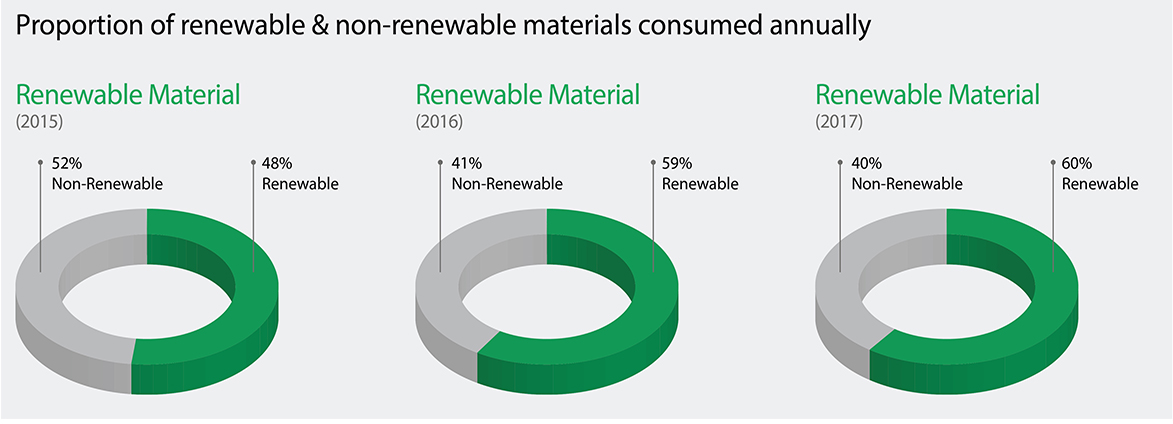
SUSTAINABILITY INITIATIVES:
Organic Cotton
Organic cotton is produced and certified to organic agricultural standards which do not allow the use of toxic chemicals or GMOs (genetically modified organisms) in its farming. Its production sustains the health of soils, ecosystem and the people, by using natural processes which benefit the environment and improve the quality of life. It reduces 71% water and 63% energy usage and has less impact on the air.
Compared to 2015, Interloop increased the use of organic cotton 2.7 times by 2017.
Better Cotton Initiative (BCI)
BCI is a long term multi-stakeholder initiative that develops and promotes good farming practices, allowing more cotton to be grown while reducing water & chemical use and protecting both working conditions and biodiversity. Better Cotton Initiative has four specific aims:
I. Reduce the environmental impact of cotton production
II. Improve livelihood and economic development in cotton producing areas
III. More commitment with Better Cotton throughout the supply chain
IV. Ensure credibility and sustainability of BCI
Pakistan is the world’s 4th largest cotton producer, and importantly, also holds the 3rd largest spinning capacity in Asia (after China and India). In 2013, BCI licensed 46,500 farmers to produce Better Cotton in Pakistan. Due to 14% less water consumption, farmers have earned approximately 42% higher profit than the ones using conventional agricultural techniques.

Determined to increase the use of BCI cotton as raw material, Interloop has tripled the consumption of Better Cotton since 2015.
Recycled Material
Recycled yarn is another choice that addresses the circular economy and reduces environmental footprint. Recycled Polyester, Recycled Nylon and Recycled Cotton Blends are options which are helping us in increasing the use of sustainable material and leading to lesser waste on one hand and reduction of toxic emissions on the other.
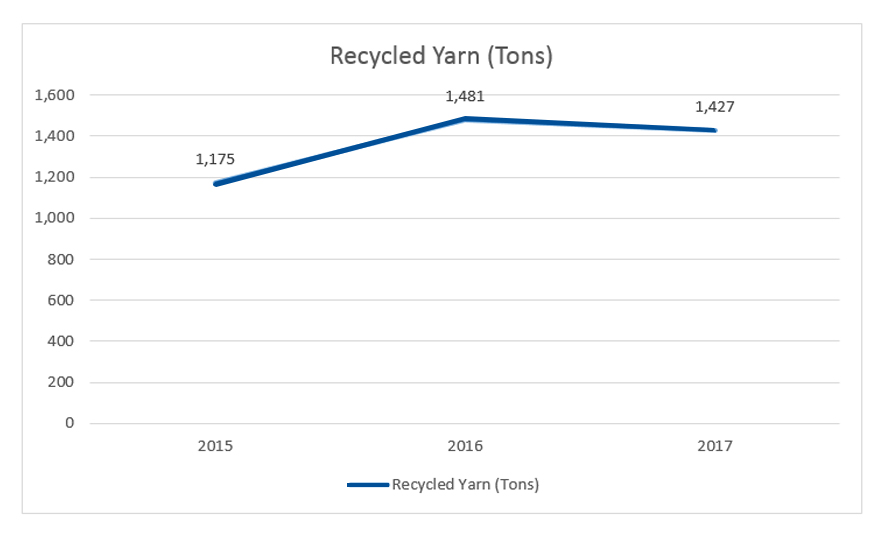
Water
Enormous increase in industrialization, urbanization and population lead the water to be the most exploited and stressed natural resource. Fashion industry is the 2nd most polluting trade in the world. In textile processing, huge amount of water is used during the procedure to induce good hand feel and aesthetics in the product. It is important for sustainable textile operations to conserve water and decrease water foot print; both direct and indirect. At Interloop, we have always been committed to environmental sustainability and continuing our efforts to conserve water through process improvement and induction of new technology. We are operating in full compliance with all applicable laws and regulations on water use. As we withdraw ground water through deep wells inside our factory premises, each facility measures water withdrawal using flow meters to calculate the internal water usage.
Water is consumed extensively in our dyeing process. We are working and investing on new technological trends to conserve water as well as improve our wastewater quality. In addition, we emphasize on redesigning the processes which include low liquor ratio recipes, reduction in line losses and responsible practices. Besides, we are also considering options to design water recycling.

We are committed to reduce our water consumption by 15% by year 2020.

With 2015 as baseline, water consumption measured in liters per kg of socks produced
and liters per kg of yarns produced

SUSTAINABILITY INITIATIVES
Water is a vital component for sustenance of human life and its significance can’t be over emphasized. We have taken multiple initiatives to conserve water by adopting advanced technology and process improvement.
One important initiative is induction of E-flow machines for washing, equipped with Nano-bubble technology. It reduces water consumption by 95%, chemical consumption by 71% and energy consumption by 50%, with zero liquid discharge. During 2017, water saved by one E-flow machine was sufficient for daily consumption of 90 middle class families. So far, 12 machines have been installed in different processing units and 11 more machines are expected to be the part of processing lines in 2018, contributing significantly towards overall water reduction.
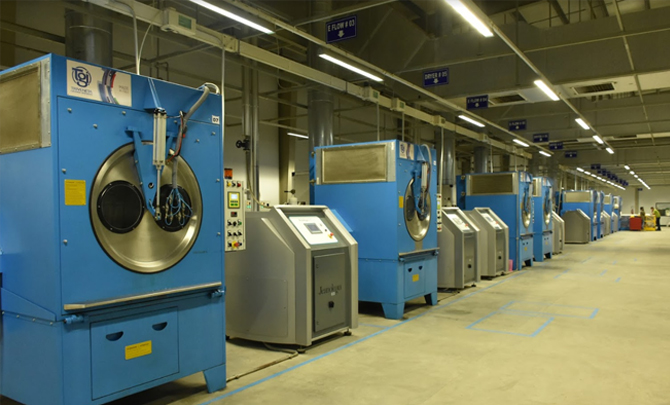
The table below shows a comparative reduction in water usage by adopting E-flow technology, resulting in reducing adverse environmental impacts:
By the use of E-flows machines in all hosiery divisions, we have saved 8268 m3 of water.
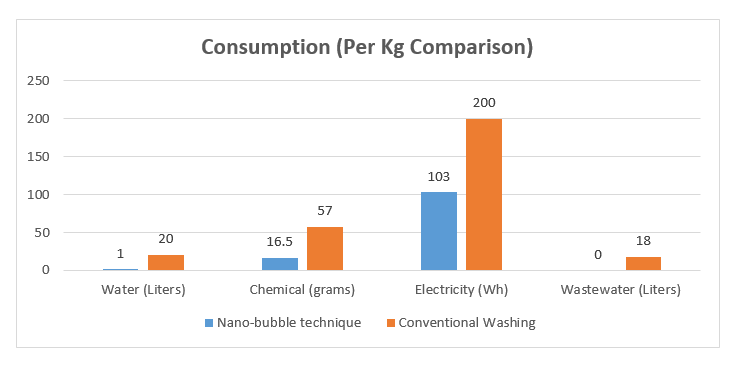
Effluent Treatment Plant
The world`s water resources are shrinking every passing day and it is emerging as one of the greatest threats future generations will be facing. Water pollution is a big hazard to water resources and the problem is worsening with industrial expansion, especially in the third world countries where awareness level is quite low. Interloop understands its responsibility towards ecological conservation and always takes measures to reduce any negative impact on natural resources. As the effluent from dye house is a potential environmental contaminant, Interloop has set-up state of the art effluent treatment plants at all hosiery manufacturing facilities to effectively manage treatment requirements. The activated sludge based effluent treatment plants run 24/7/365 and are meeting not only the National Environmental Quality Standards (NEQS) but also fulfilling the stringent parameters of world`s leading brands. The largest effluent treatment plant has the capacity of treating 180m3/hour. Interloop has a centralized QC laboratory to closely monitor the qualitative & quantitative parameters and ensures that effluent discharged into the environment is within safe quality limits. It also has a well implemented Chemical Management System which ensures Green Chemistry Inputs, keeping in view the ZDHC Waste Water Guidelines and warrants 100% ZDHC Compliance by 2020.
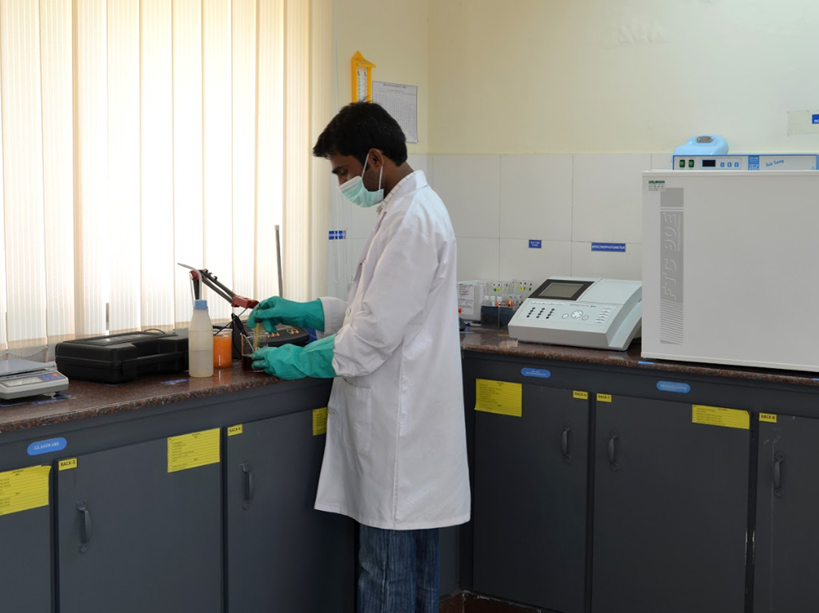

We are committed to fully comply with ZDHC standards by year 2020.

Solid Waste
The textile supply chain involves multiple raw materials producing highly diversified and differentiated products, thus generating tons of solid waste throughout the production process. The variety of solid waste generated by textile sector may range from recyclables & re-usables to hazardous waste. With growing attention to environmental responsibility towards solid waste management, the textile and apparel industry has increased efforts to reduce disposal of post-production textile waste in landfills. Simultaneously, finding alternative methods for disposal of post-consumer textile waste is gaining greater importance.
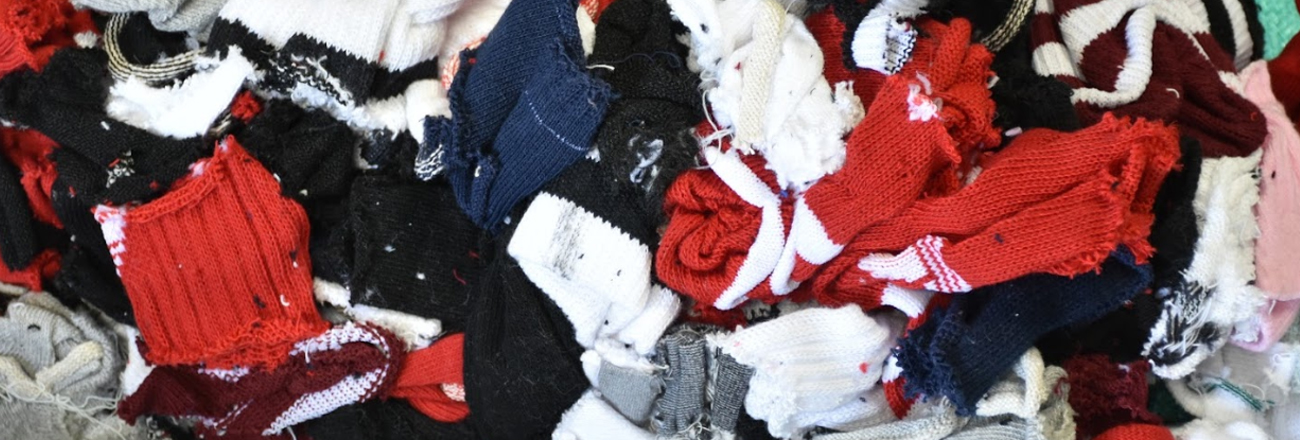
Implementation of 3R in Waste Management
During processing at Interloop’s manufacturing facilities, an assortment of waste streams and waste products are generated. Interloop has an extensive waste management program underway. Currently, more than 90% waste (including production and non-production waste) is being recycled and reused in multiple ways by various waste management vendors. Due to its harmful nature, hazardous waste is sent to the incinerator for safe disposal. The objective is to minimize waste from all Interloop manufacturing facilities and apply sustainable waste management and disposal methods through the waste management hierarchy of “Avoid, Reduce, Recycle, Recover, Treat and Dispose”.
SUSTAINABILITY INITIATIVES:
Coal Ash Brick Plant
We have taken the initiative of making bricks from Coal Ash; a waste produced in the coal boiler during steam generation. Rather than just dumping the ash that destroys water quality and land fertility, we are treating it to produce 7,000 bricks/day via an eco-friendly method, involving no burning of fossil fuel, and using sunlight for brick curing process.
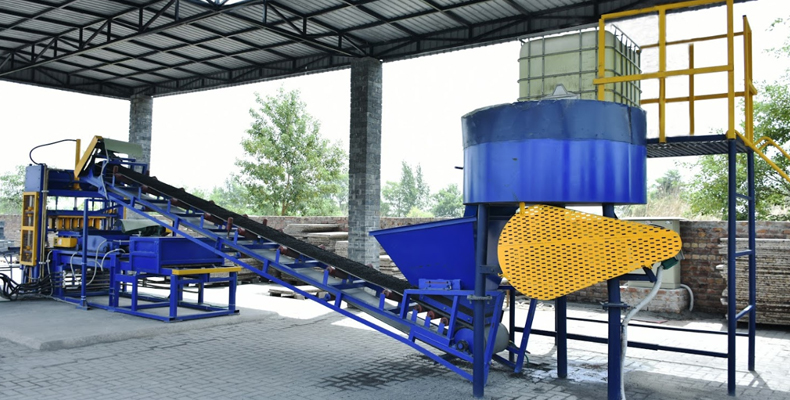
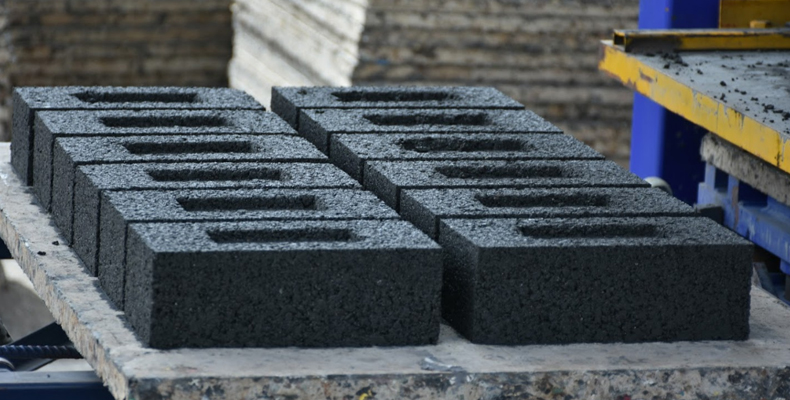
Energy
Energy plays a key role in the economic development in general and in the manufacturing sector in particular. As the global population continues to increase, the world energy requirement is expected to rise 2% annually, over the next 25 years, and so is the demand for cheap energy. After the chemical and engineering sectors, textile is the third largest energy consuming industry. However, it has the potential of saving 23% energy through induction of modern technology and process improvement.
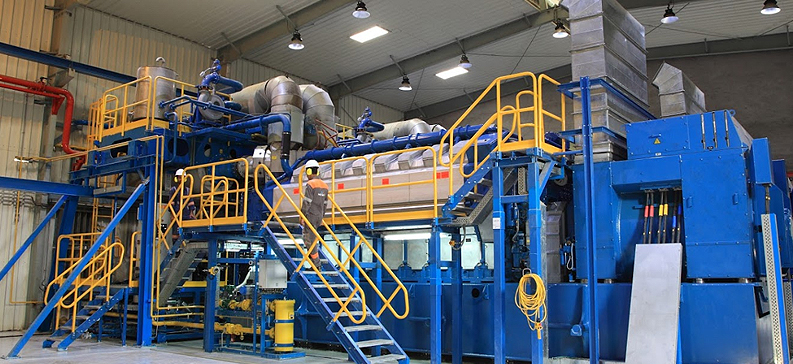
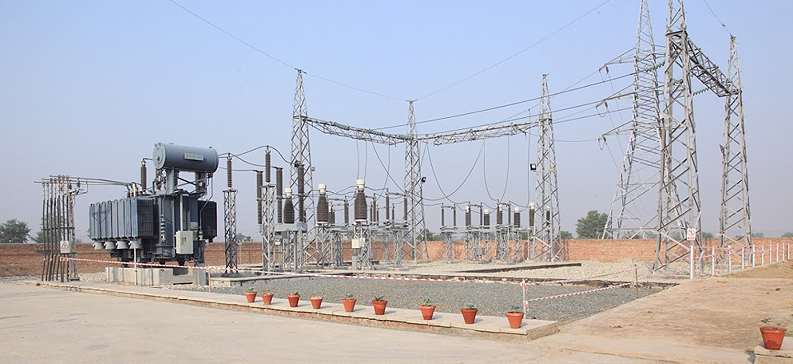
A global economy reliant on fossil fuels and the increase in greenhouse gases emissions is adversely affecting our climatic system. High electricity and steam consumption leads to increased harmful environmental impacts. Energy efficiency is a key element for any organization to reduce negative environmental impacts and increase competitiveness through energy conservation. Interloop relies on both electric and thermal energy during its process operation. Our in-house electricity generation is done using HFO and Natural Gas as primary sources, and National Grid as the secondary source. As for thermal energy, we produce steam from multiple sources including Natural Gas, HFO, Biomass Fuels and Waste Heat Recovery. Interloop is exploring the potential of renewable energy generation and increasing its share in the company’s total energy consumption, on an ongoing basis.

We are committed to reduce our energy consumption by 15% by year 2020.

With year 2015 as baseline, Energy consumption is being measured in kWh/
dozen of socks and kWh/kg of yarn.

SUSTAINABILITY INITIATIVES
Energy Management System
Interloop Limited is the 1st Textile Company and the 4th among all other industries in Pakistan to achieve ISO – 50001 Certification for Energy Management System (EnMS). The certification provides guidelines for applying EnMS to existing monitoring and measurement system along with streamlined documentation. EnMS is helping in considerably improving energy efficiency at Interloop Limited and is assisting in achieving its Sustainability Targets for 2020. Additionally, it has enabled Interloop to acquire 2 points in Nike Energy & Carbon Program, Materials Sustainability Index (MSI). The entire standard revolves around the PDCA (Plan-Do-Check-Act) cycle that endorses a continuous improvement process.
Currently, the scope of this certification includes Plant 2, Plant 4, Vertical Sampling Facility and Distribution Centre at the Interloop Industrial Park. ISO 50001 Certification is an important milestone and its scope will spread to other manufacturing Plants of Interloop as well.
Energy Conservation Projects
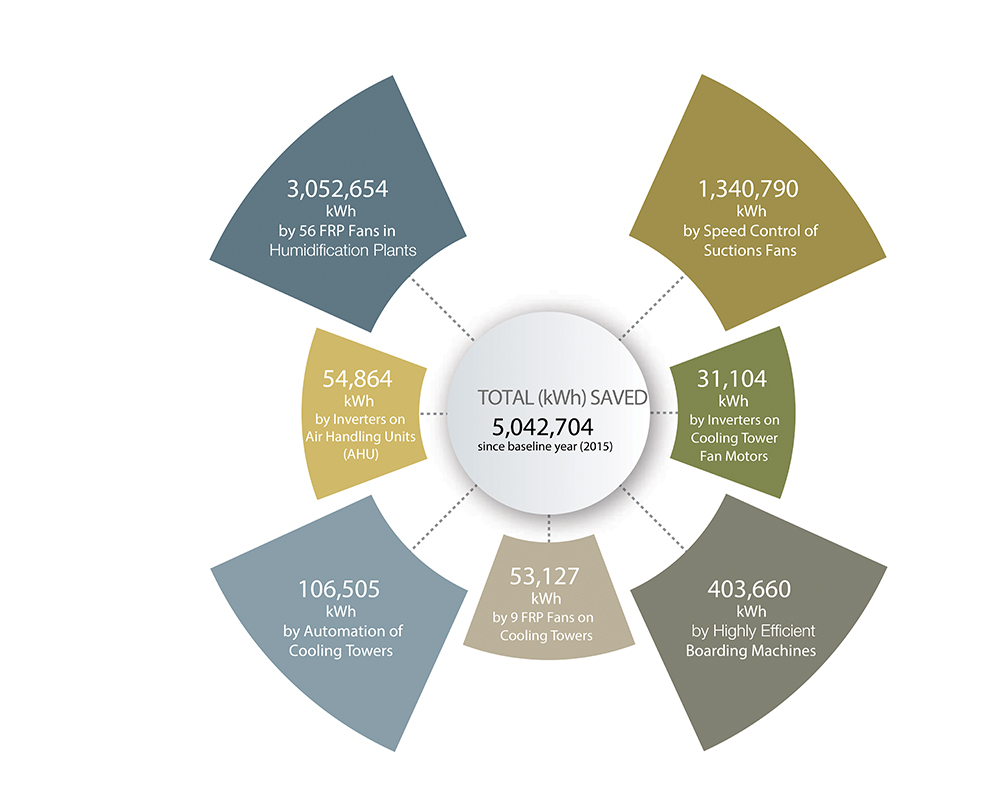
Renewable Energy
Renewable energy is the source of clean, inexhaustible and increasingly competitive energy. Diversity, abundance and potential for use anywhere on the planet are key features differentiating renewable energy from fossil fuels, but the most important attribute is that it doesn’t produce greenhouse gases which are a major cause of adverse climate change. The Earth’s temperature has risen by an average 0.85°C since the end of 19th Century. According to IEA, the world electricity demand will increase 70% by 2040, driven mainly by the emerging economies of India, China, Africa, Middle East and South East Asia. Interloop is well aware of the growing energy crisis and is adopting alternate and renewable sources such as solar and biomass for energy generation, thus adding to our contribution towards minimizing GHG emission impacts due to use of fossil fuels.

We have set the target of 4 MWp installed solar capacity by 2020.

Year 2015 has been identified as the baseline.
SUSTAINABILITY INITIATIVES
Solar Energy
Solar energy is not only abundant but the supply is free of cost and it is the cleanest source of energy in terms of CO2 emission. Our current installed solar capacity of 120KWp has already made a positive impact by generating 263,758 kWh and reducing CO2 emission by 153 tons since 2015. We have planned to increase the renewable energy production to 4MWp installed solar capacity.
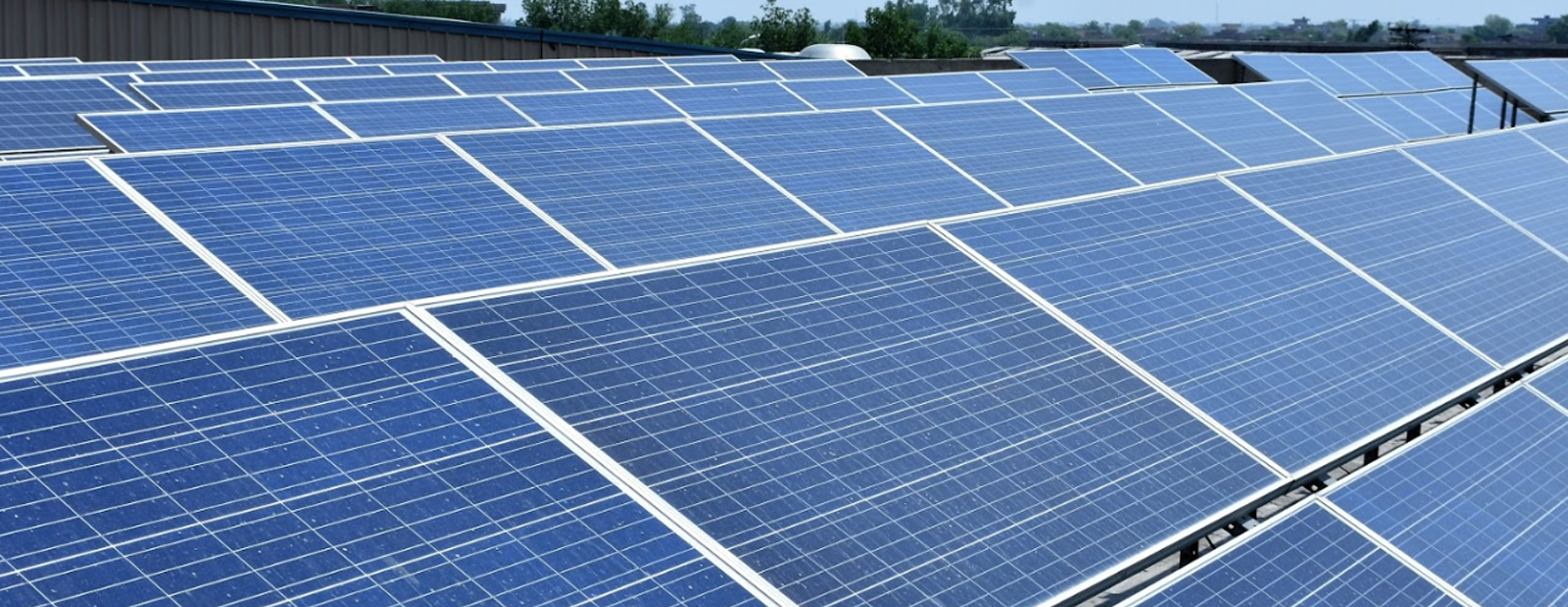
Rice Husk Boiler
Biomass fuel has very little contribution to GHG emission compared to coal and furnace oil for steam generation. Interloop fulfills some portion of its energy demand through Bio-fuel such as Corn Cob and Rice Husk. The total steam generated through Bio-fuel at Plant 3 since 2015 has been 17,912 tons, saving up to 6,694 tons of CO2 emission.
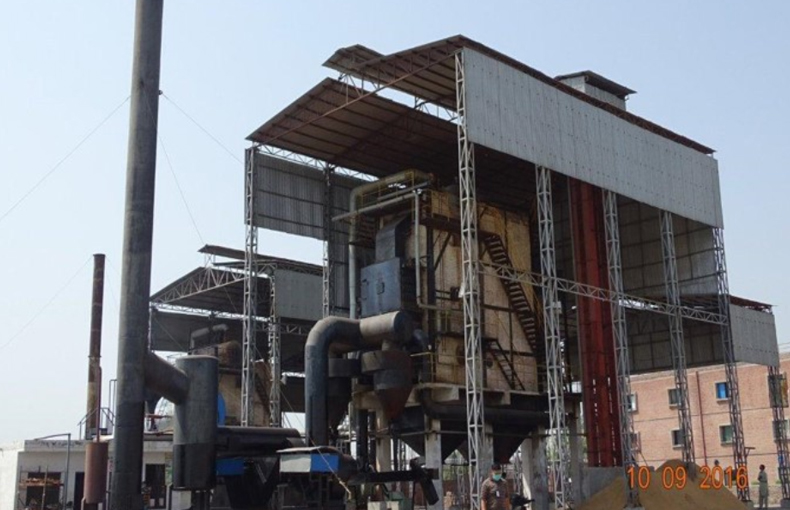

Greenhouse Gases
The relationship between energy consumption and climate change has been widely recognized. Emission of GreenHouse Gases is a side effect of the production process and has major environmental impacts which cannot be completely avoided, despite all environmental protection efforts. The emissions are subject to control limits laid down by environmental protection agency of the country. Interloop ensures compliance with these limits by taking environmental protection measures and is moving further to reduce the emissions to maximum, through energy conservation efforts.
We determine the total emissions for each plant site at regular intervals and make regular checks to control variations, if any. The direct carbon dioxide (CO2) emissions are the result of combustion processes for generation of electricity, heat and steam. We aim to reduce our reliance on fossil fuels by finding alternate sustainable energy sources and production processes. This will not only reduce our environmental footprint but will also lower costs and improve our operational efficiencies.
An inventory of stationary emission sources as well as company owned vehicle-air-emission sources is maintained. An inventory of asbestos, CFC (Chlorofluorocarbon) or any Ozone Depleting Substance (ODS) is also maintained, if required within the facility. The quarterly monitoring of air emission sources is carried out to ensure that emissions are under permissible limits. In case of any deviation, the operation of the concerned equipment is immediately shut down for subsequent remedial measures.

We are committed to reduce our Greenhouse Gas Emissions by 15% by year 2020.

We have identified year 2015 as baseline. GHG emissions are measured in
tCO2/dozen of socks and tCO2/kg of yarn.

SUSTAINABILITY INITIATIVES
Heat Recovery System at Filament Yarn Dyeing Facility
Filament Yarn Dye House is equipped with the latest & highly specialized filaments yarn processing machinery. Installation of Heat Recovery System has provided it the advantage of economizing its operations to a considerable extent. High Temperature Waste Liquor passes through heat exchanger to raise the temperature of fresh water. Heated water is used in subsequent dyeing processes with no fuel input which has reduced 540 tons of CO2 emission since 2015.
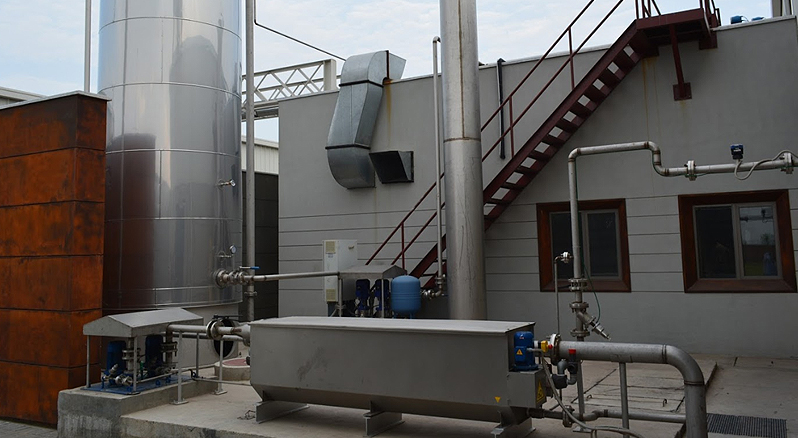
Waste Heat Recovery System (WHRS)
Besides producing electricity, the Tri-Generation System at the Interloop Power Plant also produces Free Steam using the Waste Heat Recovery Boilers. Of the total steam produced at Interloop, 25-30 % is generated through this technology with significant reduction in CO2 emission. WHRS has produced 67,130 tons free steam since 2014 and contributed to reduce 15,536 tons of CO2 emission since 2015.

Preference to R-407 & R-410 Refrigerant
Keeping Interloop aligned with international standards, we prefer to use R-407 & R-410 refrigerants, eliminating the use of R-12 & R-22 refrigerants which have been banned globally due to their harmful impacts on the environment.
Green Chemistry Inputs
The mass production and final disposal of textiles has resulted in the form of hazardous substances in the air and poisoned land & ground water. It has also resulted in toxic landfills with processed chemicals having devastating impacts on the environment and health of the people. Being the second largest polluting sector after oil companies, the textile industry uses over five trillion liters of water; equivalent to two million olympic-size swimming pools, to dye 28 billion Kgs of textiles each year. Another estimation revealed that approximately 20% of industrial water pollution is the direct outcome of dyeing and treatment of textiles.
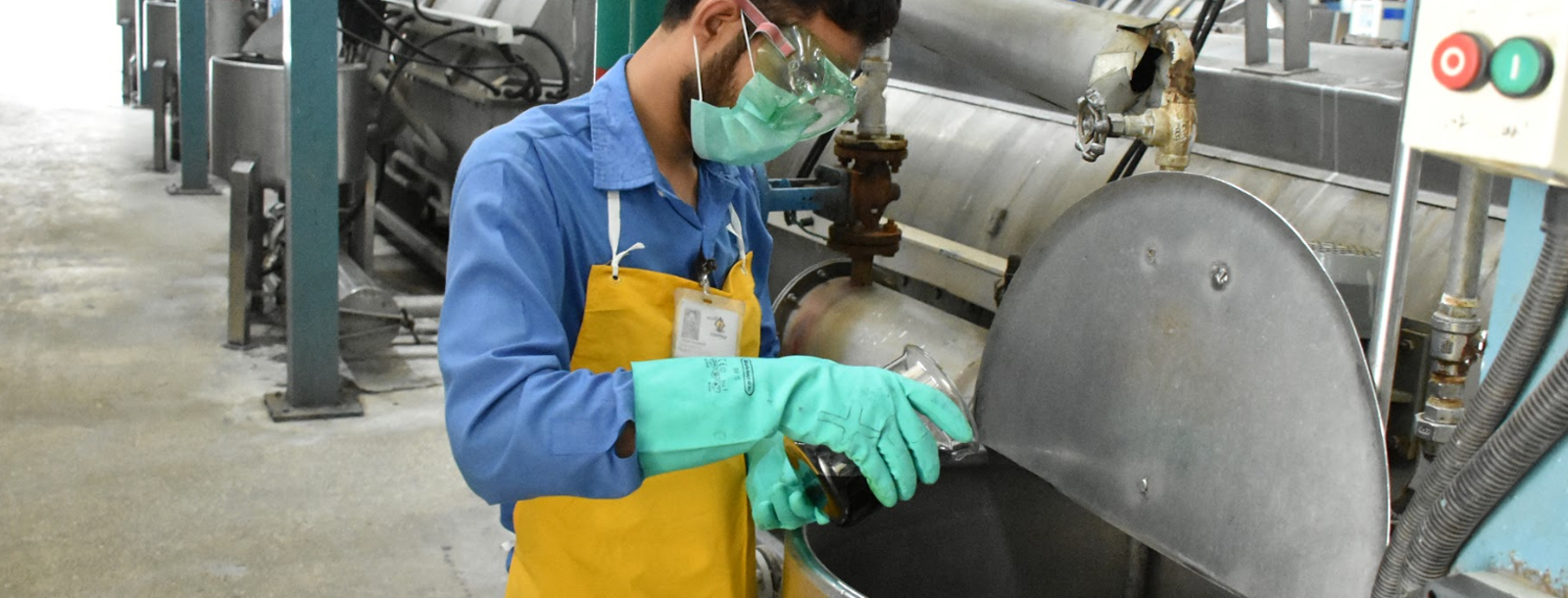
Consumers are getting more conscious about the chemicals used in their textile purchases to ensure that dangerous ones are not being used. With the growing DETOX campaign by Green Peace to clean up the textile and footwear supply chain, Interloop has also committed to achieve “Zero Discharge of Hazardous Chemicals” (ZDHC) by 2020. The Zero Discharge of Hazardous Chemicals (ZDHC) Program takes a holistic approach in tackling the issue of use of hazardous chemicals in the global textile, leather and footwear value chain.

ZDHC Compliance
Interloop’s goal is to eliminate the use of priority chemicals by focusing on the following areas:
- By managing Input chemistry
Interloop is currently following the best chemical practices and is committed to design a more efficient Chemical Management System along with reduction of chemical inventory. The Company works with certified & World’s top dyes & chemical suppliers only including Archroma, Dystar, CHT, KISCO, SOMITOMO, OHYONG, EVERLITE, RUDOLF, JINTEX, etc. Most of the suppliers are Bluesign System partner, OekoTex certified, REACH compliant and ZDHC signatory.
- Compliance of ZDHC/customer’s MRSL:
Interloop used the ZDHC MRSL (Manufacturing Restricted Substances List) list of chemical substances which includes a number of chemical substances banned from intentional use in apparel & footwear manufacturing facilities. The ZDHC MRSL also establishes acceptable concentration limits for substances in chemical formulations used within manufacturing facilities.
- Induction of certified raw materials
Interloop ensure to use Oeko-Tex 100 certified raw materials which control the use of restricted chemistry in raw materials as well as final products.

